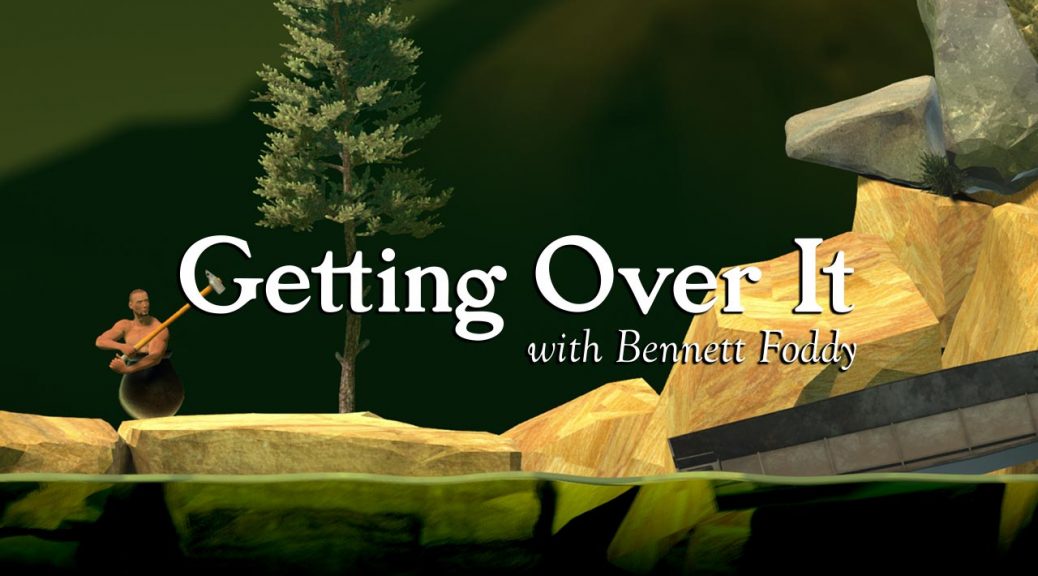
Getting Over It with Bennett Foddy
I unironically consider QWOP to be one of the best games of 2008. It was a single-joke game that told its joke impeccably and thoroughly, and it codified a positive example of intentionally uncooperative controls in which failure is more entertaining than success. The developer’s second-most-famous game, Getting Over It, follows this example closely…at first. From the suitably absurd opening image of a man in a cauldron dragging himself up a mountain with a sledgehammer, the game hits several familiar beats with its exaggeratedly mournful music choices and apologetic disinterest in your continued inability to make progress. Then something unusual happens: the controls start to make sense.
Calling them good might be a stretch, but they’re undeniably nuanced and accurate, and the concentration in the main character’s animation fully sells the deliberate weight of his actions. At this point, Getting Over It shows enormous potential as a work of misunderstood genius, a love letter to the surreal, unforgiving challenges of gaming’s early days, and an earnest attempt to make something lasting and memorable from a jumble of disposable materials. The only obstacle to this is the realization of just how long the game is and how disastrous those easy-to-make mistakes are.
Repeatedly resetting all progress in a game where progress is an easily recoverable number is acceptable; doing so in a “full” game with half of its content at stake crosses a major line, and the diminishing comedic returns of the various “aww, you failed” quotes now become apparent. There were moments in Getting Over It where I was so engaged, I was unconsciously gripping my desk, but I can’t bring myself to reach – let alone complete – the last third of its content, and unlike with QWOP, my experience feels incomplete as a result. And while the game’s artistic significance is conveyed in the end, it’s only because the narrator bluntly states its purpose.